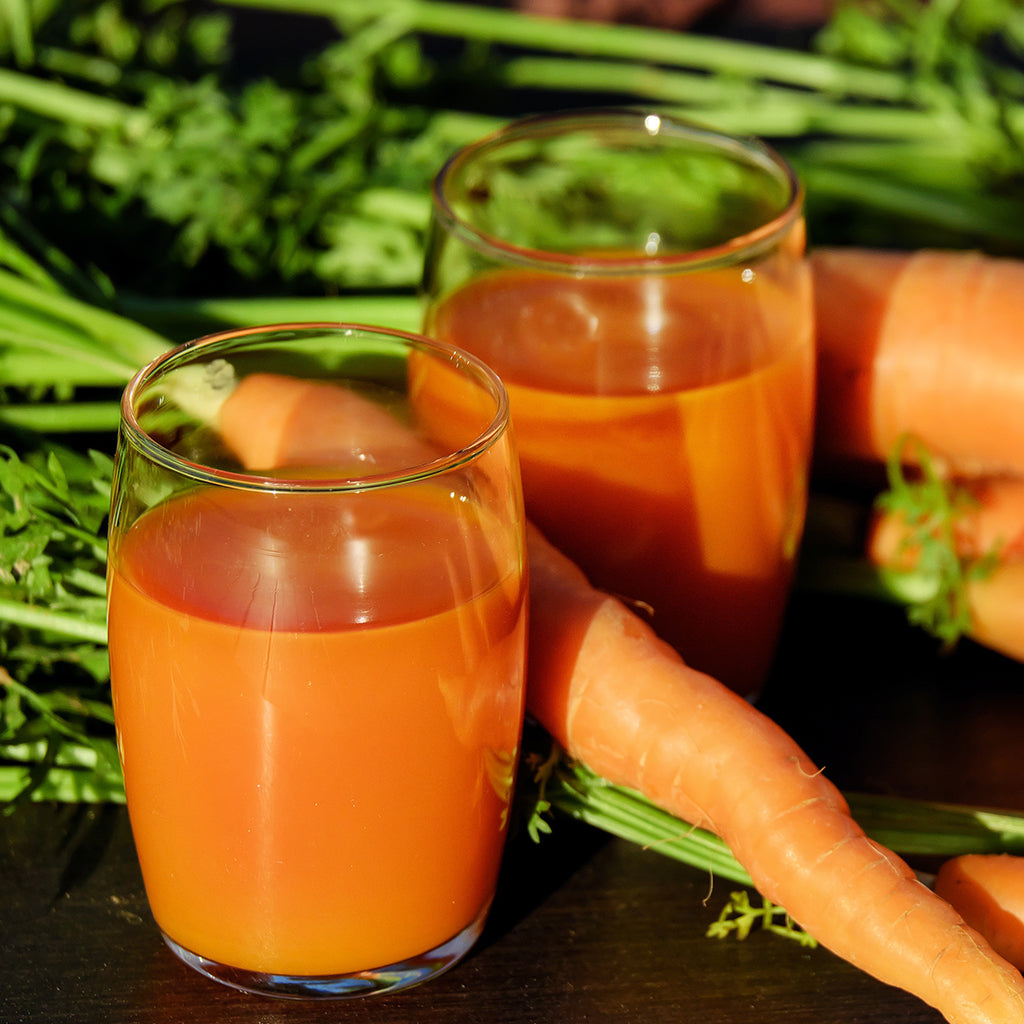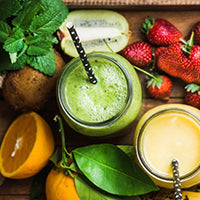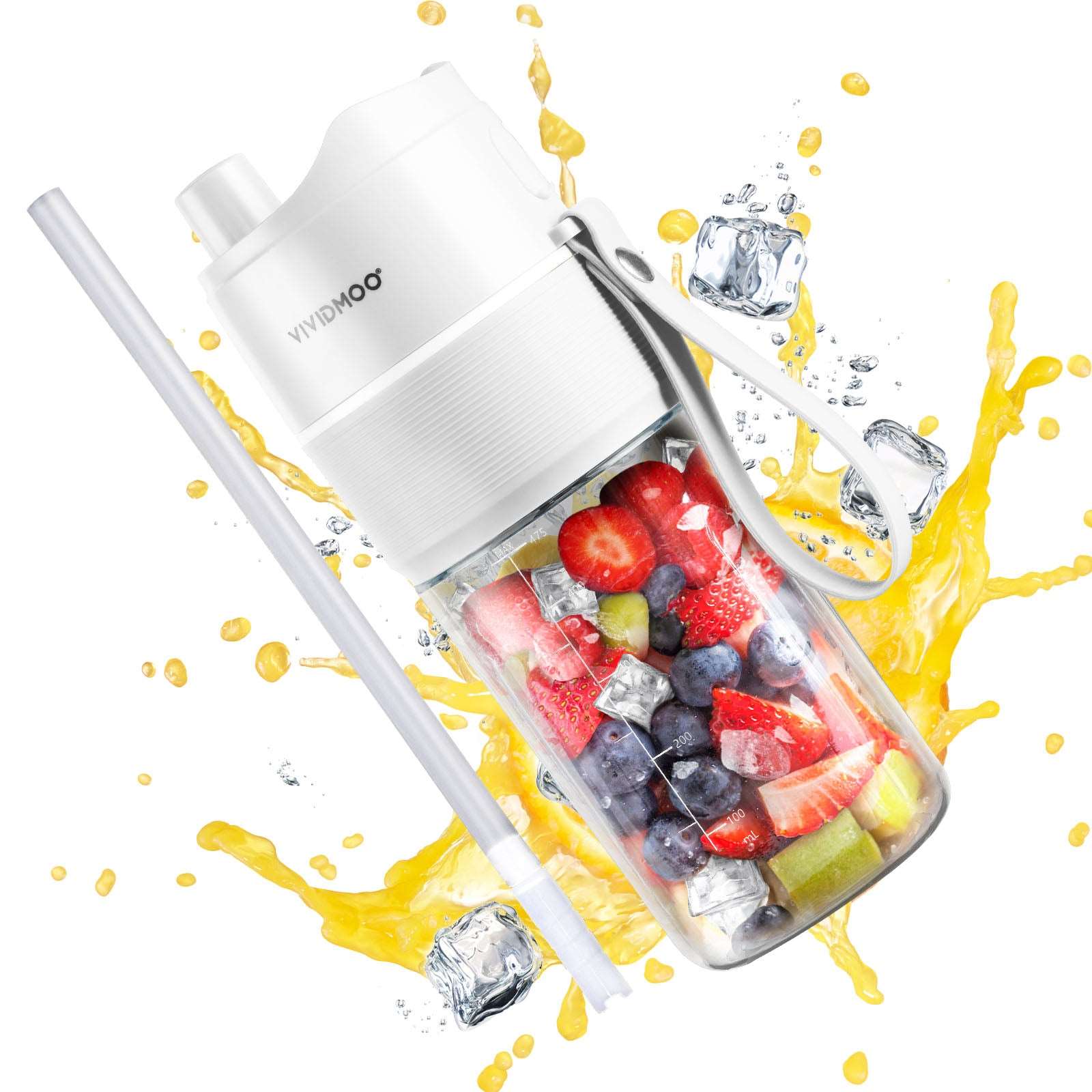
The Quiet Revolution: How Slow Juicing is Transforming Our Health
Unveiling the Secret to Maximized Juice Yield and Nutrient Preservation
In the vibrant sphere of health and wellness, juicing has long been celebrated as a conduit for the dense nutritional wealth of fruits and vegetables into a single, drinkable form. Yet, within this realm, not all juicing methods stand on equal ground. Enter the realm of slow juicing, a method that has revolutionized the juicing experience. Diverging from traditional centrifugal juicers, slow juicers, also known as cold press or masticating juicers, operate at a leisurely pace. They meticulously press the juice from your produce, ensuring maximum yield and retaining the essential nutrients that often succumb to the heat and rapidity of faster juicing techniques. Endorsed by scientific research and nutritionists alike, slow juicing is pioneering a health revolution, one tranquil, nutrient-dense sip at a time.
Higher Juice Yield: Maximizing Your Fruits and Vegetables
In the quest to extract every bit of goodness from fruits and vegetables, slow juicers emerge as the unrivaled champions. The secret lies in their method of extraction. While centrifugal juicers blitz through produce at dizzying speeds of up to 15,000 RPM (rotations per minute), slow juicers take a more measured approach, operating at just 80 to 100 RPM. This slow, gentle pressing action not only reduces heat and oxidation but also significantly boosts juice yield.
A study by a leading health institute revealed that slow juicers, on average, coax out 30% to 35% more juice from leafy greens and hardy vegetables like carrots and apples compared to their centrifugal counterparts. For instance, juicing 500 grams of mixed produce with a slow juicer can yield 350 ml of juice, whereas centrifugal juicers might only produce about 270 ml. This efficiency means substantial savings and reduced waste over time. For a family juicing daily, transitioning to a slow juicer could equate to hundreds of dollars saved each year on produce.
Furthermore, the pulp from slow juicers is markedly drier, indicating a more thorough juice extraction. This is particularly advantageous for those juicing large quantities of costly or organic produce, ensuring maximal utilization of every dollar spent.
Choosing slow juicing not only enhances health through increased nutrient consumption but also optimizes the investment in high-quality fruits and vegetables. This method aligns with a sustainable and economically mindful lifestyle, showcasing slow juicing as a judicious choice for both body and wallet.
Preservation of Nutrients: Keeping the Goodness Intact
The nutritional superiority of slow juicing stands as perhaps its most compelling advantage, arising from its minimal heat generation and reduced oxidation. Operating at a leisurely 80 RPM, in stark contrast to the high-speed whirl of centrifugal juicers, slow juicing does more than merely extract juice—it protects the fragile consortium of nutrients that fresh produce provides.
Nutrient Retention
Research consistently indicates that the heat and rapid oxidation inherent in high-speed juicing can diminish sensitive vitamins, enzymes, and antioxidants. Conversely, the cold press technique integral to slow juicing conserves these essential nutrients. A study comparing various juicing methods discovered that slow juicing retains up to 42% more vitamin C and 60% more vitamin A than traditional methods. These vitamins are pivotal for immune function, skin health, and vision, underscoring the importance of their preservation for health-conscious individuals.
Enzyme Activity
Moreover, slow juicers' gentle pressing action ensures that enzymes, crucial for digestion and energy conversion, remain active. High temperatures can denature these enzymes, but slow juicing maintains a low temperature, keeping these vital catalysts intact and functional.
Antioxidant Preservation
Antioxidants, too, benefit from the slow juicing process. These compounds combat free radicals, reducing oxidative stress and preventing cellular damage. The minimal exposure to air and heat in slow juicing means antioxidants like beta-carotene, lycopene, and flavonoids are well preserved. Studies confirm that juices produced by slow juicers boast higher concentrations of antioxidants than those from centrifugal juicers, translating theoretical benefits into tangible health advantages.
Minimal Heat and Oxidation: Ensuring Freshness and Flavor
Beyond nutrient preservation, slow juicing significantly influences the freshness and flavor of juice. This quality stems from the minimal heat and oxidation involved in the slow juicing process. Delving into the technicalities and scientific data illuminates why slow juicing excels in maintaining the original taste and prolonging the shelf life of juice.
The Role of Heat and Oxidation in Juicing
Heat and oxidation critically impact juice quality. Centrifugal juicers generate heat and introduce air into the juice, accelerating nutrient breakdown and degrading juice quality. Slow juicers, however, operate at much lower speeds (about 80 to 100 RPM), producing minimal heat and reducing air exposure.
Impact on Heat Generation
A study in the Journal of Food Science showed that centrifugal juicers could raise juice temperature by over 9°F (5°C), while slow juicers limit temperature increases to below 3°F (1.67°C). This minimal heat is crucial because even slight temperature rises can degrade heat-sensitive vitamins like Vitamin C and affect the juice's flavor profile.
Effect on Oxidation
Oxidation begins as soon as juice is extracted, exposing fruits and vegetables to air. This not only diminishes nutritional value but also impacts the juice's color and taste. Slow juicers counteract oxidation by limiting air incorporation into the juice. Food Chemistry research notes that juice from slow juicers exhibits more vibrant color and a fresher taste, with significantly lower levels of oxidation markers compared to centrifugal juicers.
Ensuring Freshness and Flavor
The benefits of reduced heat and oxidation translate into noticeable differences in juice quality. Users report that juice from slow juicers tastes fresher and retains its quality longer than juice from high-speed juicers. Sensory analysis studies support these observations, indicating that slow-juiced beverages have a richer flavor, more natural sweetness, and less bitterness. The structural integrity of the juice is also better preserved, resulting in less separation and a more appealing appearance over time.
Shelf Life Extension
The minimal heat and oxidation also extend beyond immediate consumption, enabling slow-juiced products to maintain high levels of nutrients and sensory qualities for up to 72 hours when refrigerated properly, compared to the 24-hour window often cited for centrifugally juiced beverages. This extended shelf life is a significant advantage for both commercial juice producers and home juicers who wish to prepare juice in advance.
Less Foam and Pulp: Pure and Smooth Juicing Experience
The texture, clarity, and overall drinking experience of juice play a crucial role in consumer preference and satisfaction. Slow juicing excels in providing a pure and smooth experience with minimal foam and pulp, rooted in the operational mechanics of slow juicers and supported by consumer feedback and scientific analysis.
Operational Mechanics Behind Less Foam and Pulp
Slow juicers use a grinding and pressing action to extract juice, a method that naturally introduces less air into the juice than the high-speed cutting and centrifugal forces of traditional juicers. The slow, consistent pressure not only maximizes juice extraction but also significantly reduces foam creation, since foam is mainly the result of air being emulsified into the liquid.
Scientific Backing
Research comparing different juicing technologies has found that masticating juicers produce juice with up to 80% less foam and 15% less pulp content than centrifugal juicers. This difference is not only measurable in the lab but also noticeable to the average consumer, affecting the mouthfeel and overall enjoyment of the juice.
Impact on the Juicing Experience
The reduction of foam and excess pulp enhances the juicing experience by simplifying storage and serving, as less separation occurs over time, and reduces the need for straining or secondary filtering by the consumer. For those using juice as an ingredient in recipes or cocktails, the clarity and consistency of slow-juiced beverages make them superior in appearance and integration with other components.
Quiet Operation: The Silent Benefit
The reduced noise level of slow juicers is a significant, though often overlooked, advantage. For many users, the quiet operation is a critical factor in preferring slow juicing over traditional high-speed methods. This silence is not just a minor convenience but a major attribute that enhances the user experience, making slow juicing more enjoyable and less intrusive, especially in shared spaces or during early morning or late-night juicing sessions.
The Science of Silence in Slow Juicing
Slow juicers operate at much lower speeds than centrifugal juicers—typically around 40 to 100 RPM compared to 1,000 to 24,000 RPM—resulting in less vibration and noise. Many models are designed with noise-dampening materials and engineered to minimize sound emission, making them noticeably quieter during operation.
Decibel Differences
On average, slow juicers operate between 40 to 60 decibels (dB), akin to a quiet conversation at home or background noise in a library, whereas centrifugal juicers can reach noise levels of 80 dB or more, comparable to a freight train at close range. This significant difference in noise levels highlights the appeal of slow juicing for those seeking a quieter lifestyle or wishing to minimize disruption.
Conclusion: Embracing the Slow Juicing Movement
The slow juicing movement signifies a profound shift towards a more mindful and health-conscious approach to juicing. Beyond merely adopting a new kitchen appliance, embracing slow juicing represents a commitment to a healthier, more sustainable way of consuming fruits and vegetables. With its array of benefits—from superior nutrient preservation and higher juice yield to a quieter, more user-friendly experience—slow juicing offers a clear path for those aiming to optimize their health and well-being. As this movement continues to grow, powered by technological advancements and a deepening consumer interest in health and wellness, slow juicing is set to become an integral part of a healthy lifestyle, defining a future where juicing is not just a method of extracting liquid but a step towards a more thoughtful, nutritious way of life.
The slow juicing movement goes beyond the surface benefits, delving into the essence of what it means to live healthily and sustainably. It embodies a holistic approach to nutrition, where the process of consuming fruits and vegetables is as important as the end product. This method appeals to a broad audience, from the health enthusiast seeking to maximize nutrient intake to the environmentally conscious individual aiming to reduce waste. It's a versatile solution to the universal quest for better health through nutrition.
Comprehensive Nutritional Benefits
The ability of slow juicing to preserve vital nutrients, enzymes, and antioxidants in fresh produce is unmatched. By minimizing heat and oxidation, it ensures that the juice retains its full nutritional content, flavor, and color. Scientific research supports the nutritional advantages of slow juicing, highlighting its effectiveness in nutrient preservation and absorption.
Efficiency and Sustainability
The efficiency of slow juicers, demonstrated through higher juice yields and reduced waste, presents an economic advantage while also aligning with environmental sustainability. Extracting more juice from the same amount of produce helps reduce food waste and emphasizes the growing consumer focus on sustainable living practices. The long-term cost savings, due to the lesser need for ingredients to achieve the same volume of juice, make a compelling argument for the adoption of slow juicing.
Enhancing the Juicing Experience
The qualitative benefits of slow juicing, such as reduced foam and pulp and quiet operation, significantly contribute to its appeal. These features address common grievances associated with traditional juicing methods, offering a more refined, enjoyable juicing experience that integrates seamlessly into daily life without causing disruption.
A Quiet Revolution in Health and Wellness
The slow juicing movement is reflective of a broader societal shift toward wellness, mindfulness, and environmental awareness. It caters to a wide range of individuals, including health enthusiasts, busy professionals, families, and those with a keen interest in sustainable living. Slow juicing offers a comprehensive solution to the pursuit of better health through nutrition, proving to be more than just a trend—it's a way of life that prioritizes wellness and sustainability.
The Future of Juicing

As the slow juicing movement continues to expand, driven by advancements in juicing technology and an increasing consumer focus on health and wellness, we can expect to see further innovations that enhance juicer performance and sustainability. These future developments will likely introduce new features that make slow juicing an even more integral part of maintaining a healthy lifestyle.











